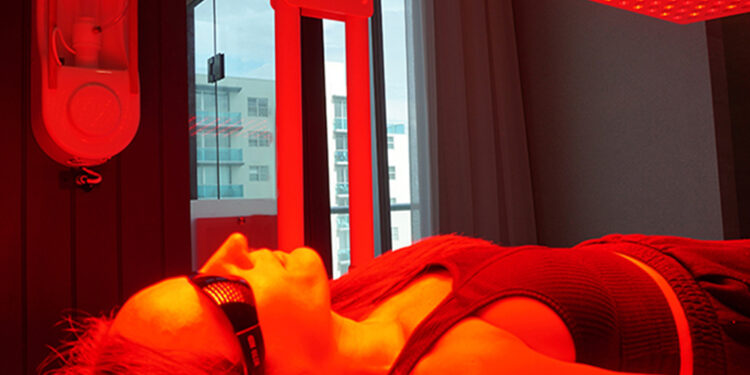Red Light Therapy Shows Age-Related Skin Benefits
An emerging area of study in reducing the effects of aging on the skin has been the innovative approach of red light therapy. Red light therapy uses specific wavelengths of light that are longer and lower energy that other wavelengths of light that can be seen. Studies have shown that while certain light, like blue and ultraviolet light can slow the function of cells, other wavelengths of light like red light can have a positive effect on cell metabolism.
Red light therapy has become a popular tool for those trying to reduce the effects of aging on the skin because it is non-invasive and does not have many of the negative or potentially severe side effects that surgery, injections, and laser resurfacing can create.
Experience this high powered ant-aging treatment for 20 minutes $75.00
Red light therapy and the future of skin care
Because red light therapy is non-invasive and provides a regenerative process in the skin, it has become an increasingly popular therapy by people wanting to reduce wrinkles and other effects of skin aging. While red light therapy is a newer type of therapy, emerging research is showing great promise in the use of red light to reduce the effects of UV light and promote skin health.
Red light therapy vs laser resurfacing
The skin aging treatment that is most similar to red light therapy is laser resurfacing, which also uses the energy of light to reduce wrinkles and promote skin health. The biggest difference between these two therapies is that the light energy used in lasers is very focused over a small area, heating and sometimes removing skin. Red light therapy is designed to be used over a large area, penetrating deeply into the skin over an entire surface.
Red light therapy vs ultraviolet light damage
While high-energy light, like the ultraviolet (UV) light of the sun, can cause damage to the skin and speed the effects of aging, red light therapy has not been found to have the same negative effect.
Red light therapy causes have been attributed to “increased cellular proliferation, as well as stimulation of tissue regeneration, through targeting fibroblasts, keratinocytes and immune cells (mast cells, neutrophils and macrophages), which can be stimulated using specific wavelengths with significant tissue penetration properties”. Unlike UV light, the article says, “red light therapy is atraumatic and bypasses the initial destructive step by directly stimulating regenerative processes in the skin”.


Comments are closed.